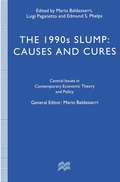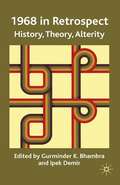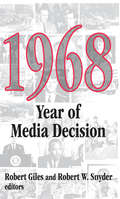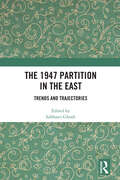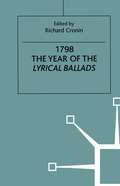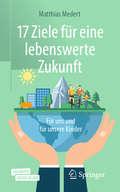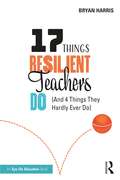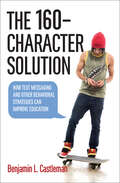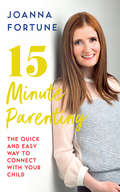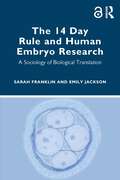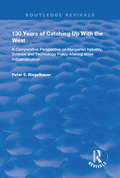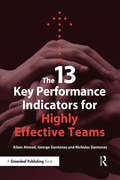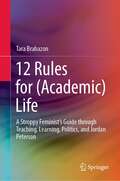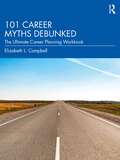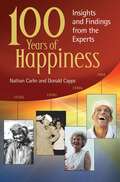- Table View
- List View
1st International Conference, ‘Resonance’: 23 and 24th November, 2022 School Of Liberal Arts and Humanities, Woxsen University, India
Artificial intelligence (AI) has been fast growing since its evolution and experiments with various new add-on features; human efficiency is one among those and the most controversial topic. This chapter focuses on its attention towards studying human consciousness and AI independently and in conjunction. It provides theories and arguments on AI being able to adapt human-like consciousness, cognitive abilities and ethics. This chapter studies responses of more than 300 candidates of the Indian population and compares it against the literature review. Furthermore, it also discusses whether AI could attain consciousness, develop its own set of cognitive abilities (cognitive AI), ethics (AI ethics) and overcome human beings’ efficiency. This chapter is a study of the Indian population’s understanding of consciousness, cognitive AI and AI ethics.
The 1990s Slump: Causes and Cures (Central Issues in Contemporary Economic Theory and Policy)
by Mario Baldassarri Luigi Paganetto Edmund S. PhelpsAt the beginning of the 1990's unemployment grew in all industrialized countries: the essays in this collection focus on the causes and cures of this worrying phenomenon. The volume starts by analysing the disparities in the different national experiences and then focusing on European unemployment. This is followed by more theoretical discussions using econometric models. The volume ends with policy recommendations.
1968 In Retrospect: History, Theory, Alterity
by Gurminder K. Bhambra Ipek DemirThis volume examines the protest movements of 1968 from innovative perspectives. With contributions from leading social theorists the book reflects on the untold narratives of race, gender and sexuality and critically addresses the standard theoretical assumptions of 1968 to discuss overlooked perspectives.
1968 In Retrospect: History, Theory, Alterity (PDF)
by Gurminder K. Bhambra Ipek DemirThis volume examines the protest movements of 1968 from innovative perspectives. With contributions from leading social theorists the book reflects on the untold narratives of race, gender and sexuality and critically addresses the standard theoretical assumptions of 1968 to discuss overlooked perspectives.
1968: Year of Media Decision
by Robert Giles Robert W. SnyderThirty years ago American political life was all relentless, painful, and confounding: the Tet Offensive brought new intensity to the Vietnam War; President Lyndon Johnson would not seek re-election; Martin Luther King, Jr. and Robert Kennedy were assassinated; student protests rocked France; a Soviet invasion ended "socialism with a human face" in Czechoslovakia; the Mexican government massacred scores of peaceful demonstrators; and Richard M. Nixon was elected president. Any one of the events of 1968 bears claim to historical significance. Together they set off shock waves that divided Americans into new and contending categories: hawks and doves, old and young, feminists and chauvinists, straights and hippies, blacks and whites, militants and moderates. As citizens alive to their own time and as reporters responsible for making sense of it, journalists did not stand aside from the conflicts of 1968. In their lives and in their work, they grappled with momentous issues--war, politics, race, and protest.
1968: Year of Media Decision
by Robert SnyderThirty years ago American political life was all relentless, painful, and confounding: the Tet Offensive brought new intensity to the Vietnam War; President Lyndon Johnson would not seek re-election; Martin Luther King, Jr. and Robert Kennedy were assassinated; student protests rocked France; a Soviet invasion ended "socialism with a human face" in Czechoslovakia; the Mexican government massacred scores of peaceful demonstrators; and Richard M. Nixon was elected president. Any one of the events of 1968 bears claim to historical significance. Together they set off shock waves that divided Americans into new and contending categories: hawks and doves, old and young, feminists and chauvinists, straights and hippies, blacks and whites, militants and moderates. As citizens alive to their own time and as reporters responsible for making sense of it, journalists did not stand aside from the conflicts of 1968. In their lives and in their work, they grappled with momentous issues--war, politics, race, and protest.
The 1947 Partition in The East: Trends and Trajectories
by Subhasri GhoshThis book explores the experiences of people affected by the Partition of British India and princely states in 1947 through first-person accounts, memoirs, archival material, literature, and cinema. It focuses on the displacement, violence and trauma of the people affected and interrogates the interrelationships between nationalism, temporality, religion, and citizenship. The authors examine the mass migrations triggered by the 1947 Partition, amidst nationalist posturing, religious violence, and debates on crucial issues of refugee rehabilitation and redistribution of land and resources. It focuses on the drawing of the borders and the ruptures in the socio-cultural bonds within regions and communities brought on by demographic changes, violence, and displacement. The volume reflects on the significant mark left by the event on the socio-political sensibilities of various communities, and the questions of identity and citizenship. It also studies the effects of Partition on the politics of Bangladesh and India’s east and northeast states, specifically Bengal, Assam and Tripura. A significant addition to the existing corpus on Partition historiography, this book will be of interest to modern Indian history, partition studies, border studies, sociology, refugee and migration studies, cultural studies, literature, post-colonial studies and South Asian studies, particularly those concerned with Bengal, Northeast India and Bangladesh.
The 1947 Partition in The East: Trends and Trajectories
by Subhasri GhoshThis book explores the experiences of people affected by the Partition of British India and princely states in 1947 through first-person accounts, memoirs, archival material, literature, and cinema. It focuses on the displacement, violence and trauma of the people affected and interrogates the interrelationships between nationalism, temporality, religion, and citizenship. The authors examine the mass migrations triggered by the 1947 Partition, amidst nationalist posturing, religious violence, and debates on crucial issues of refugee rehabilitation and redistribution of land and resources. It focuses on the drawing of the borders and the ruptures in the socio-cultural bonds within regions and communities brought on by demographic changes, violence, and displacement. The volume reflects on the significant mark left by the event on the socio-political sensibilities of various communities, and the questions of identity and citizenship. It also studies the effects of Partition on the politics of Bangladesh and India’s east and northeast states, specifically Bengal, Assam and Tripura. A significant addition to the existing corpus on Partition historiography, this book will be of interest to modern Indian history, partition studies, border studies, sociology, refugee and migration studies, cultural studies, literature, post-colonial studies and South Asian studies, particularly those concerned with Bengal, Northeast India and Bangladesh.
1798: The Year of the Lyrical Ballads (Romanticism in Perspective)
by Richard Cronin1798 is a significant date in literary history: in that year the Lyrical Ballads were published anonymously by Joseph Cottle, the Bristol bookseller. But this is a volume not about the Lyrical Ballads , but about their year. It is an attempt to re-create and examine the literary culture of 1798, the culture on which Wordsworth and Coleridge decided to make their 'experiment'. It is a book in which Wordsworth and Coleridge vie for attention, as they did in 1798, with many other writers, including Schleiermacher, John Thelwall, Mary Hays, the Abbe Barruel, Walter Savage Landor, Mary Wollstonecraft, Thomas Malthus, Joanna Baillie, George Canning, Robert Sothey and the Reverend T.J. Mathias. The chapters of this book work together to define a single historical moment that marked the beginning of romanticism in England.
17 Ziele für eine lebenswerte Zukunft: Für uns und für unsere Kinder
by Matthias MedertVielleicht machst auch du dir Sorgen darüber, wohin die vielen ökologischen und sozialen Probleme führen werden, von welcher Art und Ausmaß die Konsequenzen sein können und wie diese das Leben von Menschen betreffen werden? Dann könnte dieses Buch interessant für Dich sein: Es beschreibt anhand der 17 UN-Nachhaltigkeitsziele eine Vision für eine lebenswerte Zukunft. Du erfährst kurz und verständlich zu jedem der Ziele konkrete Hintergründe, Zusammenhänge und Herausforderungen, die es auf dem Weg dorthin noch zu meistern gilt. Es macht die Themen greifbar - sowohl global als auch bezogen auf Deutschland. Gleichzeitig liefert Dir das Buch Anregungen, wie Du selbst dazu beitragen kannst, die großen Probleme der Menschheit zu lösen: Klimawandel, Energie, Plastikmüll, Artenvielfalt, Umweltschutz, Hunger, Armut, etc.Zusammen können wir es schaffen, die 17 Ziele umzusetzen, indem wir sie mit konkreten Inhalten füllen. Falls uns das gelingt fragen unsere Kinder vielleicht eines Tages: „Wie habt ihr damals die Erde gerettet und die Menschheit in das Zeitalter der sozialen Gerechtigkeit geführt?“
17 Things Resilient Teachers Do: (And 4 Things They Hardly Ever Do)
by Bryan HarrisThis book will help you learn practical ways to manage the stress of teaching and avoid burnout. Bestselling author and educational consultant Bryan Harris presents strategies for building resilience, including reframing, understanding the power of "no", focusing on what you can control, building positive relationships, advocating for yourself, and more. Each chapter clearly presents concise and practical applications that you can implement right away. With this guidebook, you’ll feel ready to bounce back from challenges and stay focused on the joys of the profession.
17 Things Resilient Teachers Do: (And 4 Things They Hardly Ever Do)
by Bryan HarrisThis book will help you learn practical ways to manage the stress of teaching and avoid burnout. Bestselling author and educational consultant Bryan Harris presents strategies for building resilience, including reframing, understanding the power of "no", focusing on what you can control, building positive relationships, advocating for yourself, and more. Each chapter clearly presents concise and practical applications that you can implement right away. With this guidebook, you’ll feel ready to bounce back from challenges and stay focused on the joys of the profession.
The 160-Character Solution: How Text Messaging and Other Behavioral Strategies Can Improve Education
by Benjamin L. CastlemanFor decades schools have invested substantial resources in boosting educational outcomes for disadvantaged students, but those investments have not always generated positive outcomes. Although many communities have expanded school choice, for example, families often choose to keep their children in failing schools. And while the federal government has increased the size of Pell Grants, many college-bound students who would be eligible for aid never apply. Then there is the troubling trend of "summer melt," in which up to 40 percent of high school graduates who have been accepted to college, mostly from underserved communities, fail to show up for the fall semester. In The 160-Character Solution, Benjamin L. Castleman shows how insights from behavioral economicsâ€�the study of how social, cognitive, and emotional factors affect our decisionsâ€�can be leveraged to help students complete assignments, perform to their full potential on tests, and choose schools and colleges where they are well positioned for success. By employing behavioral strategies or "nudges," Castleman shows, administrators, teachers, and parents can dramatically improve educational outcomes from preschool to college.Castleman applies the science of decision making to explain why inequalities persist at various stages in education and to identify innovative solutions to improve students’ academic achievement and attainment. By focusing on behavioral changes, Castleman demonstrates that small changes in how we ask questions, design applications, and tailor reminders can have remarkable impacts on student and school success.
15-Minute Parenting: The Quick and Easy Way to Connect with Your Child
by Joanna FortuneParenting is for life – 7 days a week, 24 hours a day – and while it is one of the most rewarding experiences life can offer it can also be frustrating when faced with challenging behaviour. But what if just 15 minutes of mindful playtime each day in you and your child’s routine could change all that? Play is the language of children. It is how they communicate. By rediscovering the joy of play as an adult, you can access a whole new way to understand and respond to your child’s needs.Created with busy mums and dads in mind, psychotherapist and parenting expert Joanna Fortune has devised a unique childcare method structured around 15-minute games that can be easily incorporated into your existing daily routine. From newborns to the age of seven, her techniques are underpinned by research, neuroscience and therapeutic theories and are designed to address common behavioural issues you will meet as your child grows, including: AnxietyLashing outWhiningBoredomSibling rivalryDemands for independence15 Minute Parenting contains everything your child needs to grow into a happy, confident and resilient adult – it’s child’s play!
The 14 Day Rule and Human Embryo Research: A Sociology of Biological Translation
by Sarah Franklin Emily JacksonThis assessment of Britain’s influential 14 day rule governing embryo research explores how and why it became the de facto global standard for research into human fertilisation and embryology, arguing that its influence and stability offers valuable lessons for successful biological translation.One of the most important features of the 14 day rule, the authors claim, is its reliance on sociological as well as ethical, legislative, regulatory and scientific principles. The careful integration of social expectations and perceptions, as well as sociological definitions of the law and morality, into the development of a robust legislative infrastructure of ‘human fertilisation and embryology’, enabled what has come to be known as the Warnock Consensus – a solid and enduring public acceptance that has enabled successive parliamentary approval for controversial areas of scientific research in the UK, such as stem cell research and mitochondrial donation, for over 30 years. These important sociological insights are increasingly relevant to new biotranslational challenges such as human germline gene editing and the use of AI assisted technologies in human reproduction. As the legislation around the 14 day rule begins to be reviewed worldwide, the important lessons we can learn from its global and enduring significance will apply not only to future legislation governing embryo research, but to the future of biological translation more widely.An important volume for those interested in reproductive studies, biogovernance and biological translation, it is suitable for researchers, clinicians and students in medicine, biosciences, sociology, and science and technology studies.
The 14 Day Rule and Human Embryo Research: A Sociology of Biological Translation
by Sarah Franklin Emily JacksonThis assessment of Britain’s influential 14 day rule governing embryo research explores how and why it became the de facto global standard for research into human fertilisation and embryology, arguing that its influence and stability offers valuable lessons for successful biological translation.One of the most important features of the 14 day rule, the authors claim, is its reliance on sociological as well as ethical, legislative, regulatory and scientific principles. The careful integration of social expectations and perceptions, as well as sociological definitions of the law and morality, into the development of a robust legislative infrastructure of ‘human fertilisation and embryology’, enabled what has come to be known as the Warnock Consensus – a solid and enduring public acceptance that has enabled successive parliamentary approval for controversial areas of scientific research in the UK, such as stem cell research and mitochondrial donation, for over 30 years. These important sociological insights are increasingly relevant to new biotranslational challenges such as human germline gene editing and the use of AI assisted technologies in human reproduction. As the legislation around the 14 day rule begins to be reviewed worldwide, the important lessons we can learn from its global and enduring significance will apply not only to future legislation governing embryo research, but to the future of biological translation more widely.An important volume for those interested in reproductive studies, biogovernance and biological translation, it is suitable for researchers, clinicians and students in medicine, biosciences, sociology, and science and technology studies.
130 Years of Catching Up with the West: A Comparative Perspective on Hungarian Science and Technology Policy-making Since Industrialization (Routledge Revivals)
by Peter S BiegelbauerThis title was first published in 2000: Issues such as globalization and the fight against joblessness as well as the growth dynamics of economies in general have been linked with science and technology. Accordingly, the growing public interest in the effects of science and technology on society and politics and vice versa have been the foremost reason for the creation of this study. One of the central questions for politicians as well as for scholars in the field of science and technology is, "How can I influence a given science and technology system in a way so as to achieve optimal outcomes for a given national economy?". The study at hand tries to answer this question by analyzing the Hungarian research sphere from industrialization until the late-20th century. Since the beginning of industrialization, Hungary has made a number of attempts to catch up with the economically more developed Western European countries. The problems encountered in the course of the Hungarian efforts are surprisingly similar to the difficulties that modern, fully industrialized economies are facing today.
130 Years of Catching Up with the West: A Comparative Perspective on Hungarian Science and Technology Policy-making Since Industrialization (Routledge Revivals)
by Peter S BiegelbauerThis title was first published in 2000: Issues such as globalization and the fight against joblessness as well as the growth dynamics of economies in general have been linked with science and technology. Accordingly, the growing public interest in the effects of science and technology on society and politics and vice versa have been the foremost reason for the creation of this study. One of the central questions for politicians as well as for scholars in the field of science and technology is, "How can I influence a given science and technology system in a way so as to achieve optimal outcomes for a given national economy?". The study at hand tries to answer this question by analyzing the Hungarian research sphere from industrialization until the late-20th century. Since the beginning of industrialization, Hungary has made a number of attempts to catch up with the economically more developed Western European countries. The problems encountered in the course of the Hungarian efforts are surprisingly similar to the difficulties that modern, fully industrialized economies are facing today.
The 13 Key Performance Indicators for Highly Effective Teams
by Allam Ahmed George Siantonas Nicholas SiantonasAn organisation's most important asset is its people. And critical to an organisation's success is the extent to which its people interact effectively – both with each other as team members and with the wider organisation. This is why managing teams has become a key area for a growing number of organisations around the world. While many organisations are world-class at managing their materials and machinery, they fall short in managing the human side of their activities.This book outlines the challenges faced by both team leaders and team members in 21st-century workplaces. It proposes 13 key performance or "team health" indicators for highly effective teams based on research data collected from a large range of industry sectors, team sizes and organisations in the UK. It contributes to the understanding of the nature and functioning of team cohesiveness by describing teamwork as a multi-component variable and identifying the factors that impact on teams and the implications of teamwork for organisations.The book sets out to aid organisations by introducing a Team Performance Diagnostic (TPD) tool. The TPD enables organisations to gain an accurate and detailed insight into the real-time performance of their teams, helps team managers to understand the underlying 'people' issues within the team and how to reach higher levels of team performance quickly. The TPD has been widely used in major multinationals and the UK public sector to pinpoint hard-to-find opportunities to achieve rapid improvements.The research suggests that the use of TPD contributes to more free-flowing feedback both within the team and in the organisation as a whole, and that successful teams are indicative of a healthy organisational culture.This book is an essential guide for senior managers and policy-makers dealing with team effectiveness, and will be highly useful for students of business and management.
The 13 Key Performance Indicators for Highly Effective Teams
by Allam Ahmed George Siantonas Nicholas SiantonasAn organisation's most important asset is its people. And critical to an organisation's success is the extent to which its people interact effectively – both with each other as team members and with the wider organisation. This is why managing teams has become a key area for a growing number of organisations around the world. While many organisations are world-class at managing their materials and machinery, they fall short in managing the human side of their activities.This book outlines the challenges faced by both team leaders and team members in 21st-century workplaces. It proposes 13 key performance or "team health" indicators for highly effective teams based on research data collected from a large range of industry sectors, team sizes and organisations in the UK. It contributes to the understanding of the nature and functioning of team cohesiveness by describing teamwork as a multi-component variable and identifying the factors that impact on teams and the implications of teamwork for organisations.The book sets out to aid organisations by introducing a Team Performance Diagnostic (TPD) tool. The TPD enables organisations to gain an accurate and detailed insight into the real-time performance of their teams, helps team managers to understand the underlying 'people' issues within the team and how to reach higher levels of team performance quickly. The TPD has been widely used in major multinationals and the UK public sector to pinpoint hard-to-find opportunities to achieve rapid improvements.The research suggests that the use of TPD contributes to more free-flowing feedback both within the team and in the organisation as a whole, and that successful teams are indicative of a healthy organisational culture.This book is an essential guide for senior managers and policy-makers dealing with team effectiveness, and will be highly useful for students of business and management.
12 Rules for (Academic) Life: A Stroppy Feminist’s Guide through Teaching, Learning, Politics, and Jordan Peterson
by Tara BrabazonThese are strange times. Climate crises. Health crises. Collapsing systems. Influencers. And yes - Jordan Peterson.We are currently living in a (Post) Peterson Paradigm. This book – 12 Rules for (Academic) Life - explores what has happened to teaching, learning and politics through this odd and chaotic intervention. Deploying feminism, this lens and theory offers a glass-sharpened view of this moment in international higher education. It is organized through twelve mantras for higher education in this interregnum, and offers new, radical, edgy and passionate methodologies, epistemologies and ontologies for a University sector searching for a purpose. This is a feminist book which targets a feminist audience, both inside and outside higher education. It presents a clear focus on how this Peterson moment can be managed and challenged, when in future such academics deploy social media in this way. This book is also a part of higher education studies, exploring the role of the public / critical / dissenting / organic intellectual in debates about the political economy, identity/politics and leadership.A question of our time – through a climate emergency, a pandemic and polarized politics – is why Professor Jordan Peterson gained profile and notoriety. The Jordan Peterson moment commenced in September 2016 with his YouTube video, “Professor against political correctness,” and concluded with his debate with Slavoj Zizek on April 19, 2019. From this moment, his credibility was dented, if not destroyed.Jordan Peterson infused scholarly debates with Punch and Judy extremism and misunderstandings. Instead, this book offers research rather than certainty, interpretation rather than dogma, evidence rather than opinion, and theory rather than ‘moral truth.’ The goal is to recalibrate this (Post) Peterson Paradigm, to take stock of how this moment occurred, and how to create a revision of higher education.
101 Career Myths Debunked: The Ultimate Career Planning Workbook
by Elizabeth L. CampbellWhat if everything you know about careers is false? Bombarded by toxic misinformation about unemployment and failing career prospects, job hunters are often halted by fear. 101 Career Myths Debunked is essential reading for college students, job hunters, and career changers to discover the myths holding them back and reveal the surprising truths and practical steps that will set them on the path to career success.Written by a counseling psychologist and career psychology expert, 101 Career Myths Debunked is your personal career coach and ultimate planning guide. This easy-to-use workbook will show you how to boost your confidence and build a life you love. It walks you through the entire career development process and helps you deal successfully with everything you need to consider. You’ll learn practical new ways to move forward from your present uncertainty into a promising future.
101 Career Myths Debunked: The Ultimate Career Planning Workbook
by Elizabeth L. CampbellWhat if everything you know about careers is false? Bombarded by toxic misinformation about unemployment and failing career prospects, job hunters are often halted by fear. 101 Career Myths Debunked is essential reading for college students, job hunters, and career changers to discover the myths holding them back and reveal the surprising truths and practical steps that will set them on the path to career success.Written by a counseling psychologist and career psychology expert, 101 Career Myths Debunked is your personal career coach and ultimate planning guide. This easy-to-use workbook will show you how to boost your confidence and build a life you love. It walks you through the entire career development process and helps you deal successfully with everything you need to consider. You’ll learn practical new ways to move forward from your present uncertainty into a promising future.
100 Years of Happiness: Insights and Findings from the Experts (Psychology, Religion, and Spirituality)
by Nathan S. Carlin Donald Eric CappsThis book sums up 100 of years of research into the study of happiness—from 19th century scientific insights on the subject to the pop psychology perspectives of modern-day America.We all want to be happy, but what does that mean, and how do we get there? These questions may be a popular topic of positive psychology books in recent years, but interest in the subject stretches back over a century. Distinguished authors Nathan Carlin and Donald Capps examine opinions, research studies, and insights about happiness from the 18th century through today. 100 Years of Happiness: Insights and Findings from the Experts is organized into three sections—one that explores insights from philosophers, another part that reviews study results from researchers, and a final section that casts some skepticism on the study of happiness. The authors review what the experts have found, and explore such questions as: Is happiness the goal of life? Is it possible to measure happiness? Is it possible to become happier? What is the difference between unhappiness and depression? If humankind could eliminate unhappiness from the human condition, should we? This fascinating text provides a basis for readers to develop their own conclusions, and to continue humankind's ongoing discourse on the subject.
100 Years of Happiness: Insights and Findings from the Experts (Psychology, Religion, and Spirituality)
by Nathan S. Carlin Donald Eric CappsThis book sums up 100 of years of research into the study of happiness—from 19th century scientific insights on the subject to the pop psychology perspectives of modern-day America.We all want to be happy, but what does that mean, and how do we get there? These questions may be a popular topic of positive psychology books in recent years, but interest in the subject stretches back over a century. Distinguished authors Nathan Carlin and Donald Capps examine opinions, research studies, and insights about happiness from the 18th century through today. 100 Years of Happiness: Insights and Findings from the Experts is organized into three sections—one that explores insights from philosophers, another part that reviews study results from researchers, and a final section that casts some skepticism on the study of happiness. The authors review what the experts have found, and explore such questions as: Is happiness the goal of life? Is it possible to measure happiness? Is it possible to become happier? What is the difference between unhappiness and depression? If humankind could eliminate unhappiness from the human condition, should we? This fascinating text provides a basis for readers to develop their own conclusions, and to continue humankind's ongoing discourse on the subject.

